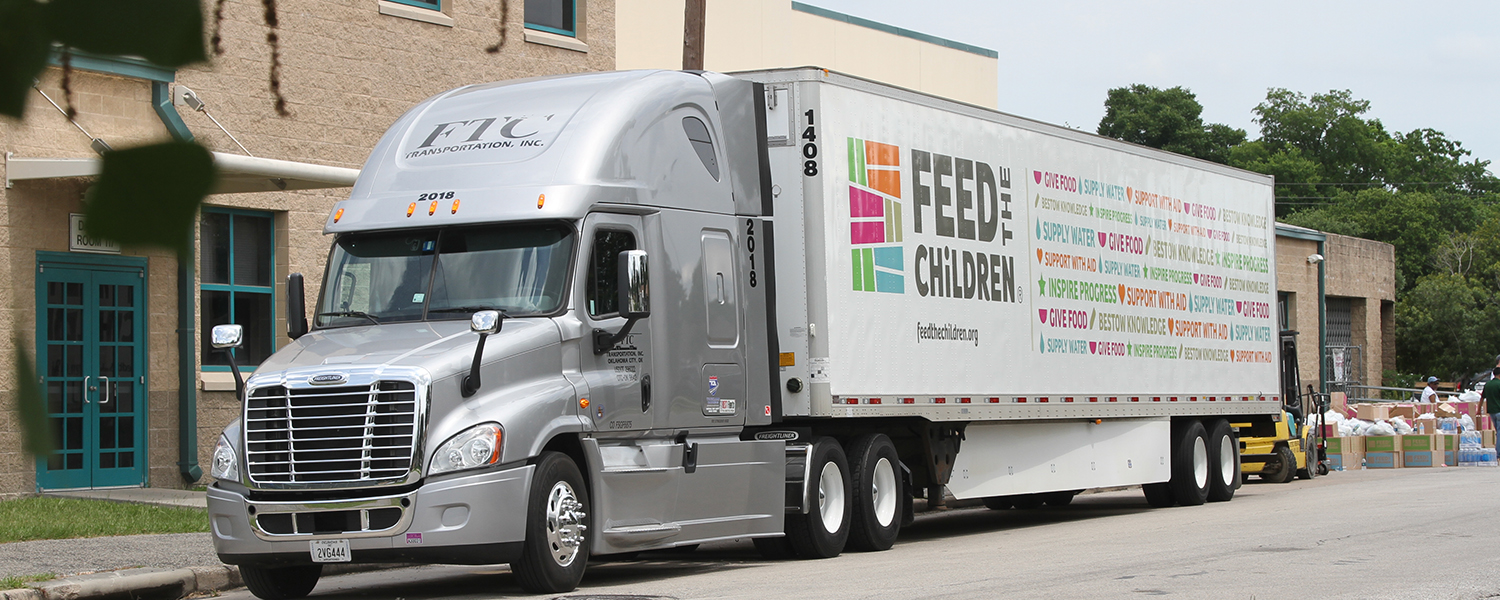
FTC Transportation: safe and sound
Safety Awards, Coupled with Being Named a ‘Best Fleet to Drive For,’ Distinguishes Company
If you were to write a business plan to create and manage an extremely well-run and safe trucking company, you might start by analyzing the competition. You just might want to copy the blue print of FTC Transportation.
Based in Oklahoma City, FTCT operates just 35 trucks, but the trucking company is about as blue chip as you can get. It started its life in 1986 as the U.S. and Canadian dedicated carrier to the Feed the Children Program (a global organization that feeds more than 263,000 children on a daily basis), delivering hunger and disaster relief freight. It expanded operations to “for-hire” carriage to utilize its tractor-trailers on backhauls, and when there was capacity for freight shipments.
Good company to drive for? Check - it’s been nationally recognized as one the Best Fleets to Drive For, for the past five consecutive years. It’s also been named as one of Oklahoma’s Top Workplaces for three consecutive years.
Safety? Check again. FTCT has been awarded Platinum and Gold Safety awards by Great West Casualty for the past four years. The Oklahoma Trucking Association recognized the company for Outstanding Achievement in Highway Safety in 2016. The company is also a past two-time Grand Trophy winner in the small carrier division of the National Fleet Safety Awards from the Truckload Carriers Association and Great West Casualty.
“Safety is at the fore-front of every decision made at FTCT,” proclaims the company’s website. “Hiring only the safest, most professional drivers has allowed FTCT to maintain the highest of safety standards.”
“Delivering our freight safely is what we’re all about, and that’s reflected in our mission statement,” says Emory Mills, FTCT’s Director of Safety and Driver Administration. “We have a responsibility to our drivers, and the motoring public.”
Augmenting its comprehensive safety program is a program with CarriersEdge, which provides online training - both full courses and refresher/remedial courses. “They’ve been a great partner in our continuing education program with drivers,” says Mills. “We have a combination of safety programs at work - including a tractor/trailer walk-around, where drivers need to find planted defects during a pre-trip truck inspection. It’s much like the national truck driving championship, where drivers can showcase their abilities. This is very effective, but only part of our safety program. Drivers are on the road the majority of the time. It only makes sense to have an online training program that reaches them at their workplace. And CarriersEdge does.”
According to Mills, the delivery of training is much better than other models the company tested. “We looked at videos, but they weren’t very effective. Drivers would come in and watch a video on a specific topic, but they would not engage. They would be on their phone texting, or dozing off. We would have to bring someone in the room to just monitor, to ensure they were paying attention. For a small company, that’s not a good use of our time. And worse yet, we weren’t sure what information the drivers were retaining. There wasn’t a test at the end.”
After analyzing different training systems in the industry, FTCT determined CarriersEdge made the most sense. “Their courses, with interactive experiences, are in-depth and very well put together. They are designed for comprehension in a manner that makes learning easy,” says Mills. “Plus we can upload our safety newsletters and other information, such as our monthly safety meeting minutes, to our secure CarriersEdge portal, so our drivers can get all their information off one site. This makes it easy for everyone. We’re also in the process of issuing tablets to all our drivers so they can review the material, and have access to CarriersEdge training and information while on the road.”
For Jon “AZ” Atzenhofer, training is a necessary evil. “It’s continuing education - and I’ve seen good ways and bad ways of working with drivers,” he says. A driver for 29 years, the last 10 with FTCT, Atzenhofer says one company’s solution was to have a training kiosk at a terminal. “We logged on to show we were there, saw the video, then logged out to document we stayed and watched it. It was pretty much useless. Watching a video was about the last thing we wanted to do when we came back to the terminal.”
In comparison, Atzenhofer says he likes to do training and course work on his own schedule. “And I can start and stop when I like,” he says. “With CarriersEdge, it remembers where I was in the course, so I can resume when I want. I also like how they ask questions frequently, so I stay more engaged with what I’m learning. It also has verbal information, visual information, and demonstration videos - everyone has a different way of learning. The exam at the end then tests my full comprehension, and Emory can see that I took and passed the test. It’s all documented.”